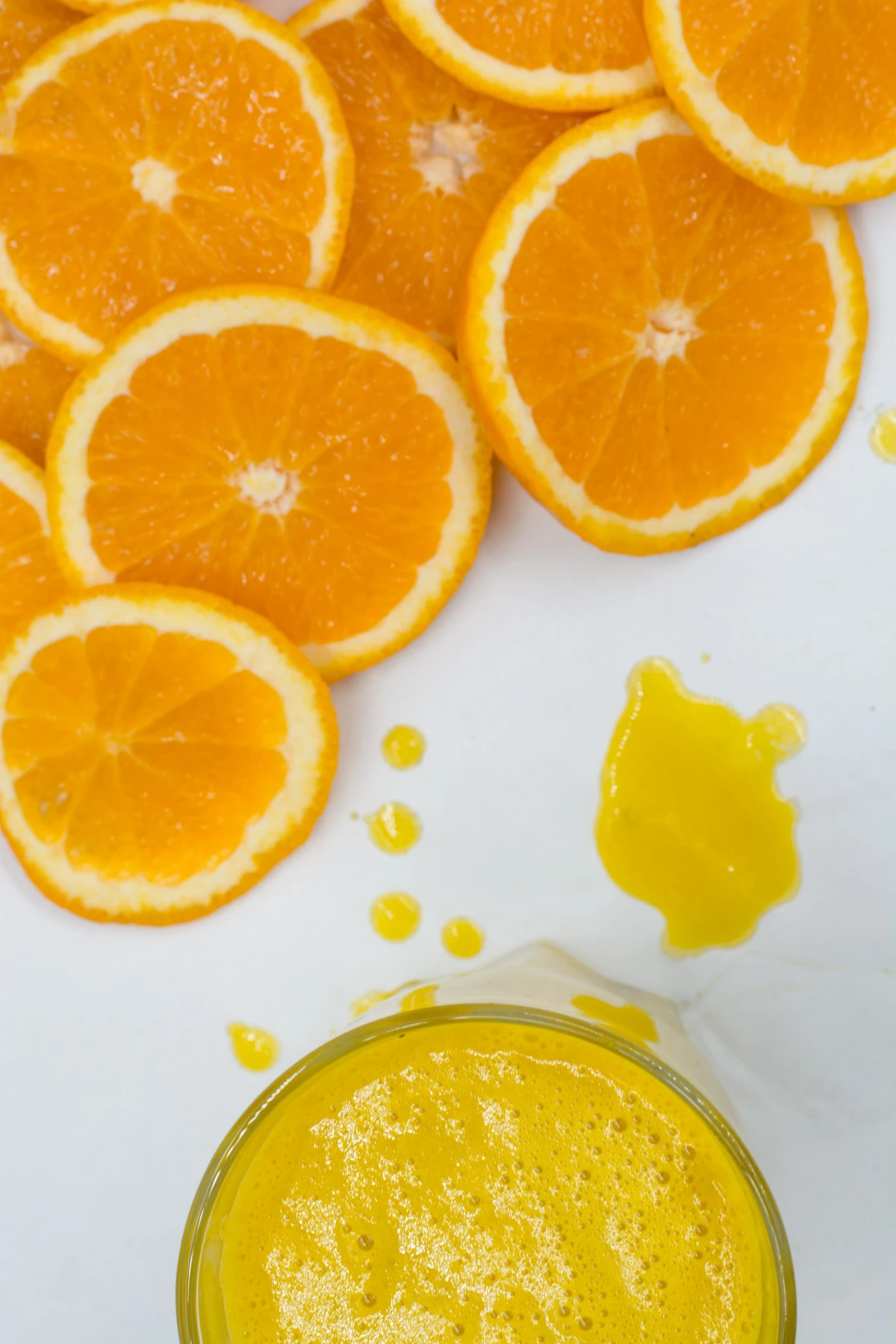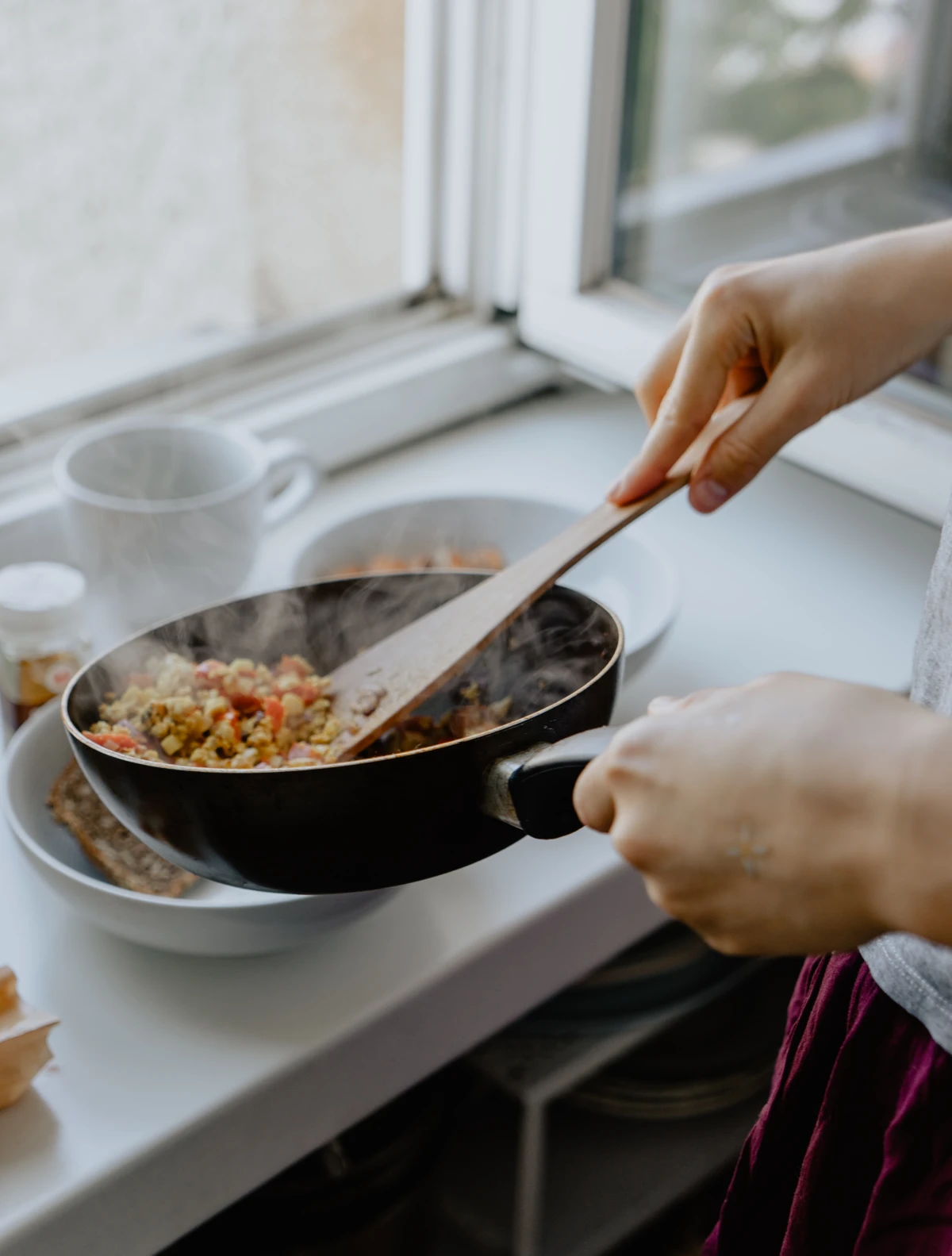A Down-to-Earth Guide to Rebuilding Your Gut Health
For years, I’ve worked with people who feel completely let down by their own bodies. It’s a story I hear all the time. They show up with a grab-bag of confusing symptoms—that relentless bloating that makes you want to unbutton your pants by 3 PM, unpredictable energy crashes, skin problems that just won’t quit, and this nagging feeling that something is fundamentally ‘off.’ More often than not, their journey eventually leads them to one place: their gut.
In this article
I’ve learned that getting back to feeling good isn’t about finding some magic pill or a one-size-fits-all diet. Honestly, those usually don’t work long-term. It’s about methodically understanding and rebuilding the incredibly complex ecosystem living inside you. This isn’t a quick fix. It’s a process of listening to your body, clearing out what’s causing harm, and intentionally adding what helps it heal. It’s a journey, but it’s one you can absolutely navigate.
Your Gut Is More Than Just a Food Processor
Before we can fix something, it helps to know what’s going on under the hood, right? Your gut is so much more than a simple plumbing system. Think of it as a bustling, vibrant garden inside you, home to trillions of microorganisms. This community is called the gut microbiome.

In a healthy garden, you have a huge variety of helpful plants, bugs, and worms all working together. They keep pests in check and make the soil rich and fertile. Your gut is exactly the same. A diverse mix of good bacteria helps you break down food, produces essential vitamins (like B12 and K), and even regulates your mood. Oh yeah, about 90% of your body’s serotonin—the ‘feel-good’ neurotransmitter—is actually made in your gut. This is the heart of the ‘gut-brain axis,’ the very real communication highway between your digestive system and your brain.
But when this internal garden gets out of balance—a state called dysbiosis—it’s like weeds start taking over. Harmful bacteria, yeast, or other critters begin to outnumber the good guys. This imbalance can spark inflammation, not just in your gut, but all over your body. Your gut wall is lined with a super-thin layer of cells that form a tight barrier. When that barrier gets inflamed and damaged, tiny gaps can form. This is what people often call ‘leaky gut,’ and it allows undigested food particles and toxins to sneak into your bloodstream where they don’t belong. Your immune system spots these invaders and goes on the attack, which can trigger those systemic issues like skin rashes, joint pain, and crushing fatigue. Understanding this is step one to true healing.

First Things First: Figuring Out What’s Really Going On
A lot of people come to me saying, “I think I have leaky gut.” While they might be right, we never want to guess. The most powerful starting tool isn’t some expensive lab test; it’s a simple, detailed journal. For two weeks, I have clients track everything. And I mean everything.
Here’s what you should be tracking in your own daily gut journal:
- Time of Meal/Snack: When did you eat?
- What You Ate & Drank: Be specific! Not just “salad,” but “spinach salad with chicken, tomatoes, cucumbers, and balsamic vinaigrette.”
- Symptoms (and rate them 1-10): Note any bloating, gas, heartburn, headaches, etc.
- Energy Level (1-10): Did you feel energized or hit a wall?
- Mood: Were you feeling anxious, irritable, happy, or calm?
- Bowel Movements: This is crucial! It might feel weird, but get familiar with the Bristol Stool Chart (a quick search online will show you). It’s a helpful diagnostic tool.
This simple practice is incredibly revealing. You start to see patterns you never would have noticed. Maybe that afternoon brain fog always shows up after a sandwich for lunch. Or maybe your insomnia is worse on days you have that creamy coffee. This journal becomes your personal roadmap.

Sometimes, a journal isn’t enough. If symptoms are severe, this is when working with a professional to consider clinical testing is a good idea. A comprehensive stool analysis can give a snapshot of your microbiome, while a SIBO (Small Intestinal Bacterial Overgrowth) breath test can check for bacteria in the wrong place. Heads up, though: I see a lot of people spend hundreds of dollars on direct-to-consumer tests online that aren’t clinically validated and just cause confusion. Testing should be a targeted step with a pro who can actually interpret the results and build a plan from them.
The 5-Step Game Plan for Gut Healing
Over the years, the functional health world has refined a super reliable protocol for this. It’s often called the 5R Framework: Remove, Replace, Reinoculate, Repair, and Rebalance. It’s the system I use because it’s logical, it covers all the bases, and it just plain works.

1. Remove: Clear Out the Troublemakers
First, you have to stop pouring fuel on the fire. This means temporarily removing the things causing inflammation and feeding the bad microbes. We usually start with a temporary elimination diet for 3-4 weeks. Based on your journal, you’d pull out the most common offenders: gluten, dairy, corn, soy, and processed sugar. This isn’t a life sentence! It’s a short-term experiment to see how your body responds. Afterward, you reintroduce them one by one, waiting three days between each, to see what triggers a reaction. I once worked with a young guy who’d had eczema his whole life. He cut out gluten, and within two weeks, his skin was clearer than it had ever been. For him, that was the primary irritant.
This phase is also about tackling any known infections found on a test and, just as importantly, removing lifestyle irritants like chronic stress.

2. Replace: Power Up Your Digestion
If you’re not breaking down your food properly, it sits and ferments in your gut, feeding the wrong bacteria and causing gas and bloating. A lot of us, especially when stressed, don’t produce enough stomach acid or digestive enzymes. Telltale signs include feeling way too full after meals, heartburn (which is counterintuitive, I know), and seeing undigested food in your stool. To help, you might temporarily use a broad-spectrum digestive enzyme with your meals. These usually cost between $25 and $40 for a month’s supply. For confirmed low stomach acid, some people use betaine HCl, but this is a big one to do with a professional, as it’s not safe if you have ulcers or take NSAIDs.
3. Reinoculate: Rebuild the Garden
Okay, the weeds are gone and the soil is prepped. Time to plant the good seeds! This is all about probiotics (the good bacteria) and prebiotics (the fiber they love to eat).

I always suggest a food-first approach. Fermented foods are probiotic powerhouses. But a quick trip to the store can be overwhelming. Here’s a simple guide:
- Sauerkraut: This is fermented cabbage. Look for brands in the refrigerated section that say “raw” or “unpasteurized.” The stuff on the shelf in a can won’t have live cultures. It has a tangy, sour taste.
- Kimchi: A spicy, Korean fermented vegetable dish. Like sauerkraut, get it from the refrigerated case. It’s packed with flavor and different bacterial strains.
- Kefir or Plain Yogurt: These are fermented dairy (or non-dairy) products. Check the label for “live and active cultures” and avoid brands with a ton of added sugar. Kefir is drinkable and a bit more potent than yogurt.
- Kombucha: A fermented tea. It can be a great alternative to soda, but be a label detective! Many brands are loaded with sugar, which defeats the purpose. Look for ones with under 5-7 grams of sugar per serving.
Quick Tip: Start small! A tablespoon of sauerkraut or a few ounces of kefir is plenty at first. Adding too much too fast can cause some temporary rumbling as your gut adjusts.

And don’t forget prebiotics—the fertilizer. Garlic, onions, leeks, asparagus, and slightly green bananas are fantastic sources. (A word of caution: if you have SIBO, these high-FODMAP foods can make things worse initially, which is why a personalized plan is so key).
4. Repair: Heal the Gut Lining
With the irritants gone, we can focus on patching up that gut barrier. Certain nutrients are superstars for this. L-glutamine, an amino acid, is the primary fuel for gut cells. Zinc is also critical for a strong gut wall. While you MUST talk to a pro before starting supplements, a common therapeutic starting point to discuss is 2-5 grams of L-glutamine powder in water on an empty stomach.
My favorite food-based approach? Bone broth. It’s rich in collagen and amino acids that are the literal building blocks for tissue repair. It’s also incredibly easy to make. Seriously, here’s a mini-tutorial: get about 2 pounds of bones (chicken or beef) from a butcher or a quality grocery store, put them in a pot, cover with water, add a splash of apple cider vinegar (this helps pull minerals from the bones), and let it simmer for at least 12-24 hours. That’s it. A warm cup a day can be so soothing.

For my vegan and vegetarian friends: No bone broth, no problem. You can focus on plant-based sources of the same key amino acids. Foods like spirulina, soy, and cabbage are great. You can also look into a good vegan “collagen-builder” supplement, which provides the nutrients your body needs to make its own.
5. Rebalance: Lock in Healthy Habits
The final step is about your lifestyle. Gut health isn’t just about food. It’s about how you live.
Stress management is non-negotiable. Here’s one thing you can do TODAY: Before your next meal, put your phone away. Close your eyes. Take 5 slow, deep belly breaths. This simple act can shift your body out of ‘fight-or-flight’ and into ‘rest-and-digest’ mode, instantly improving digestion. It costs nothing and takes one minute.
Prioritize sleep. Aim for 7-9 hours. Your gut microbes have their own daily rhythm, and poor sleep throws it all out of whack. And finally, practice mindful eating. Chew your food until it’s practically liquid. Put your fork down between bites. This gives your digestive system a huge head start.

What This Actually Looks (and Costs) Like
It’s important to be realistic. This process takes time and can have a cost. So, how long does this take? Everyone is different, but here’s a general timeline:
- Weeks 1-4 (The ‘Remove’ Phase): This is often the hardest part as you change your diet. You might feel a bit worse before you feel better as your body adjusts. Stick with it!
- Month 2 (Replace & Reinoculate): You should be noticing improvements in your main symptoms. This is when you start adding in digestive support and slowly introducing fermented foods.
- Month 3 and Beyond (Repair & Rebalance): This is about deep healing and building sustainable habits. You’ll have a much better idea of your personal trigger foods and what makes you feel amazing.
As for budget, you can do this without breaking the bank. The food-first approach is cheapest: making your own bone broth costs maybe $10-$15 for a huge batch. Focusing on whole vegetables and proteins is always a win. If you go the supplement route, it adds up. A quality probiotic can run $30-$50 a month, digestive enzymes are about $30, and a tub of L-glutamine might be $25. Prioritize what you need most and start there.

It’s not always a straight line to success. Here are a few common pitfalls:
- The ‘All or Nothing’ Trap: Don’t let perfection be the enemy of good. If you slip up and eat something off-plan, don’t spiral. Just get back on track with your next meal. Stressing about being perfect is, well, stressful—and that’s bad for your gut!
- Going Too Fast: If you suddenly feel super bloated after adding a ton of fiber or fermented foods, that’s a sign your gut isn’t ready. Back off, go back to a tiny amount, and increase it much more slowly.
- Hidden Sugars and Irritants: That ‘healthy’ salad dressing might be loaded with sugar and soybean oil. That gluten-free bread might be full of cornstarch. Become a label reader to catch these sneaky culprits.
Safety First: When You Absolutely Must See a Doctor
Let’s be crystal clear: this is for educational purposes and is not a substitute for medical advice. You have to see a doctor for a proper diagnosis, especially if you have any ‘red flag’ symptoms. These include: unintended weight loss, blood in your stool, severe abdominal pain that doesn’t go away, or difficulty swallowing.

Self-diagnosing can be truly dangerous. I once had a client who was sure she just had a food sensitivity. Her symptoms, however, made me insist she see her doctor immediately. It turned out to be an early-stage colon cancer. Her prompt medical evaluation was absolutely critical.
Rebuilding your gut is a journey of patience, consistency, and self-compassion. It’s about so much more than just quieting your symptoms; it’s about restoring the very foundation of your health. By working methodically, listening to your body, and getting professional guidance when you need it, you can cultivate a healthy, resilient internal garden and finally start feeling like yourself again.
Inspirational Gallery
The quiet confidence that comes from understanding your body’s signals is a profound shift. It’s moving from fearing food to seeing it as a tool for nourishment. Imagine finishing a meal without immediate bloating, or waking up with clear, sustained energy. This isn’t about restriction; it’s about liberation and building a trusting relationship with your body again, one mindful meal at a time.
- Start Slow: Just one forkful of sauerkraut or a few sips of kefir can be potent. Let your system adjust for a few days before increasing the amount to avoid digestive upset.
- Watch the Sugar: Many commercial kombuchas are high in sugar, which can feed the wrong gut microbes. Choose brands like GT’s Synergy or Health-Ade with less than 6g of sugar per serving.
- Diversify Your Sources: Don’t just stick to one type. Rotate between kimchi, kefir, plain yogurt, and miso to introduce a wider range of beneficial bacteria strains.
Not all probiotics are created equal: Look for supplements specifying the exact strains (e.g., Lactobacillus rhamnosus GG). High-quality brands like Seed with its two-in-one capsule technology or Garden of Life‘s refrigerated formulas help ensure the bacteria are alive and can survive stomach acid to reach your intestines where they do their work.
The gut microbiome can weigh up to 2 kg (nearly 4.5 lbs) and contains 100 times more genetic information than our own human genome. It’s often referred to as our ‘second genome’.
Probiotics get all the attention, but they need food to thrive. That’s where prebiotics come in—they are the fertilizer for your internal garden. Focus on incorporating a variety of these fibers into your diet:
- Jerusalem artichokes and chicory root (rich in inulin)
- Leeks, asparagus, and dandelion greens
- Slightly under-ripe bananas (a source of resistant starch)
- Whole oats and barley
Ever heard of ‘psychobiotics’?
It’s a fascinating and emerging field focusing on live microorganisms that, when ingested, might produce a health benefit in patients suffering from psychiatric illness. Essentially, these are probiotics that have a potential impact on mood. Strains like Lactobacillus helveticus and Bifidobacterium longum have been studied for their potential to reduce anxiety and stress-related symptoms, reinforcing the power of the gut-brain axis.
Milk Kefir: A fermented milk drink, it’s packed with a very wide variety of bacteria and beneficial yeasts (often 30+ strains). It’s typically better tolerated than yogurt by those with lactose sensitivity due to the fermentation process.
Kombucha: A fermented tea, it’s dairy-free and offers a different set of beneficial bacteria and acids. Watch out for high sugar content in commercial brands.
For sheer probiotic diversity, kefir often has the edge, but kombucha is a great dairy-free alternative.
A landmark 2021 study from Stanford University showed that a 10-week diet high in fermented foods increases microbiome diversity and decreases 19 different inflammatory markers.
What this means for you is that consistently including items like kimchi, plain yogurt, and kefir isn’t just a trend—it’s a scientifically-backed strategy for actively calming inflammation and building a more resilient gut.
- Helps seal the gut lining with easily-digestible collagen and gelatin.
- Provides minerals like calcium and magnesium in an absorbable form.
- Soothes inflammation with amino acids like glycine and proline.
The secret to these benefits? A simple, slow-simmered bone broth. Use leftover chicken carcasses or beef bones, cover with water, add a splash of apple cider vinegar to help extract minerals, and simmer for 12-24 hours. It’s a foundational healing tool that costs pennies to make.
Think of fiber like a workout for your gut. Just as you vary exercises to train different muscles, you need to vary your fiber sources to cultivate a diverse microbiome. Sticking to just one source, like a daily psyllium husk drink, only feeds a narrow range of bacteria. The goal is diversity: rotate between soluble fiber (oats, carrots, apples) and insoluble fiber (nuts, cauliflower, whole grains) to build a robust and resilient gut ecosystem.










